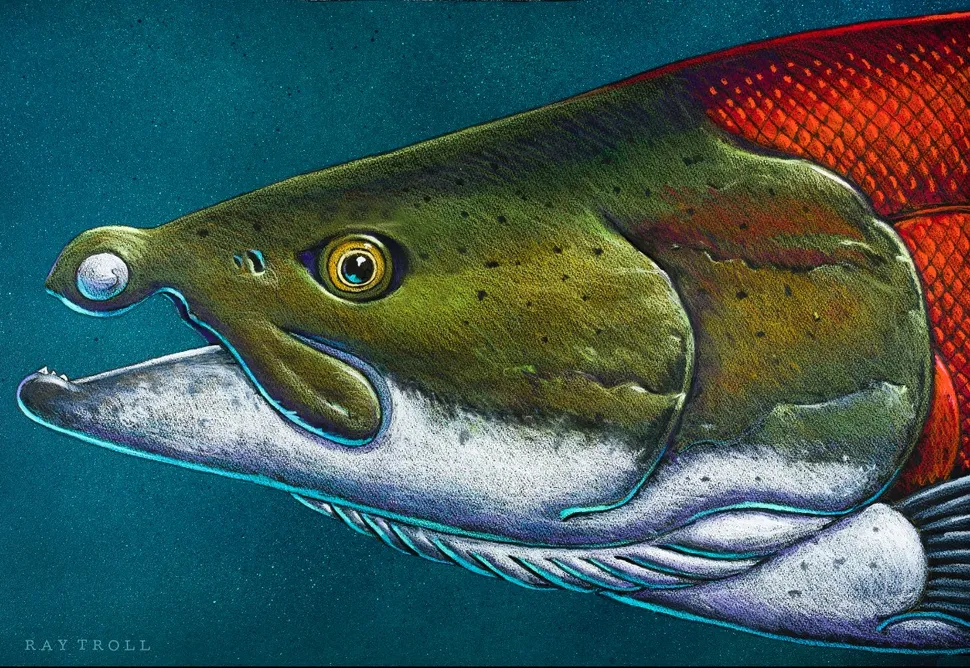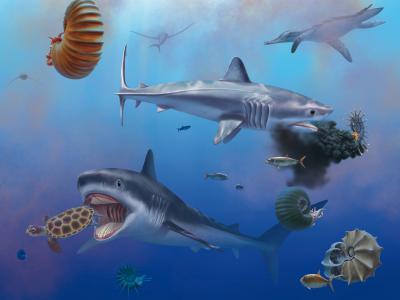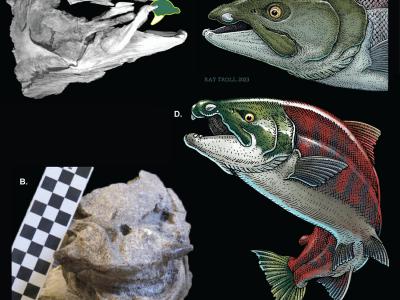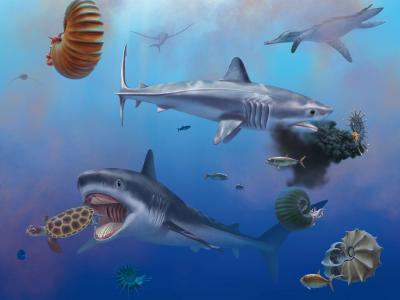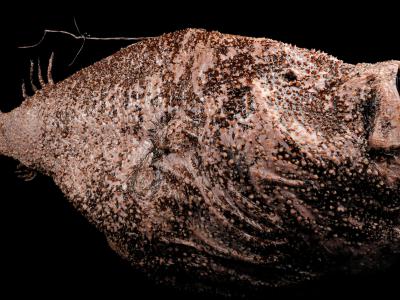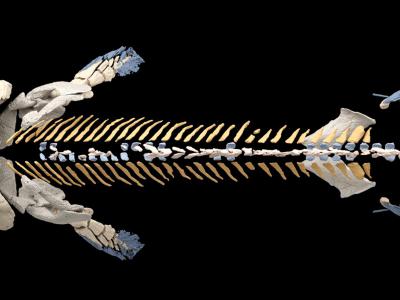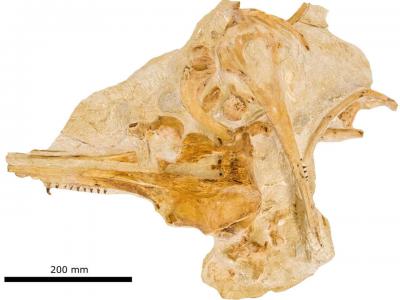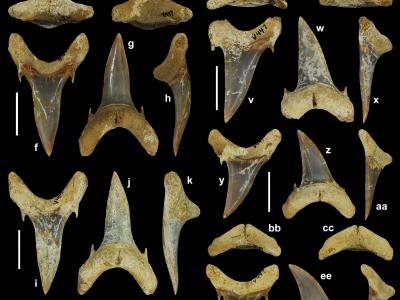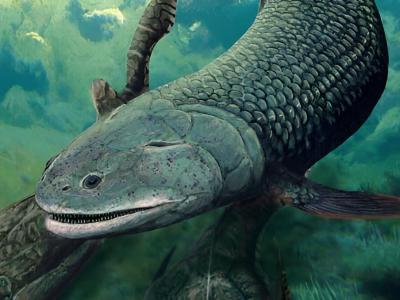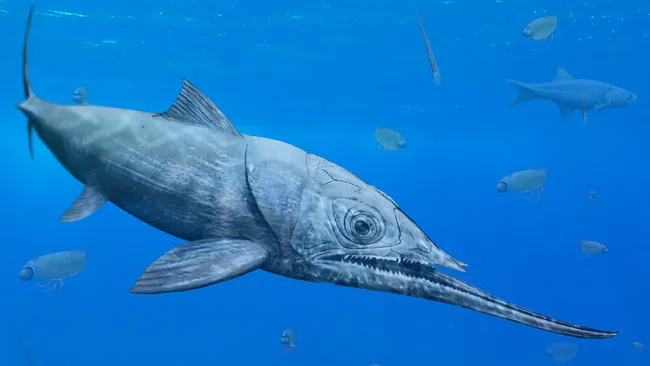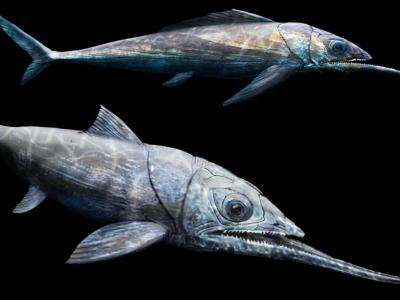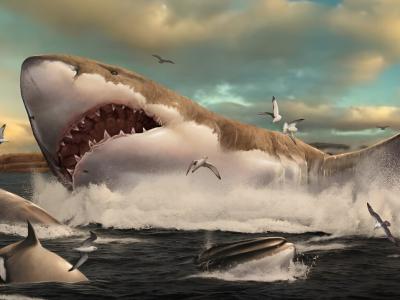对鱼化石耳朵的研究
化石很难反映动物的生活方式和生存环境。但在适当的条件下,分析保存完好的鱼类化石中的同位素组成会产生很好的结果。鱼类的内耳含有小的方解石球,被称为耳石。在现代鱼类中,耳石所反映的历史曾被用作鱼类在生命不同阶段生存环境的一种记录。将类似的技术用于保存完好的晚白垩纪Vorhisia vulpes鱼化石,显示出一种与现代北美切努克鱼和红大马蛤鱼类似的生命史:它们在河口的咸水中产卵,然后在其生命的第一年迁移到开放海洋中去,三年后返回河口,可能是回来产卵,然后死去。这项研究工作除了很好地反映鱼类的生活方式外,还为了解7000万年前海洋的状态提供了很好的信息,这些信息对于了解海洋学方面的问题以及气候变化很重要。
Photographs of each specimen are found in the lower right corner of each plot. The maximum lengths of each otolith are: 1, 1.25 cm; 2, 1.10 cm; 3, 1.15 cm; 4, 1.20 cm. The green shaded area represents estuarine conditions; the blue shaded area represents marine conditions. Seawater temperature estimates using the oxygen isotope fractionation factor of ref. 8 and a seawater  18O of -1
18O of -1 are next to the highest oxygen isotope axis labels. Temperature estimates apply to the marine
are next to the highest oxygen isotope axis labels. Temperature estimates apply to the marine  18O values in the blue shaded areas. The horizontal dashed line represents the mean
18O values in the blue shaded areas. The horizontal dashed line represents the mean  18O and temperature of the marine phase of V. vulpes (- 1.1
18O and temperature of the marine phase of V. vulpes (- 1.1 , 17.6 °C).
, 17.6 °C).  13C minima indicated by M are interpreted as having been caused by annual migrations within the basin.
13C minima indicated by M are interpreted as having been caused by annual migrations within the basin.

